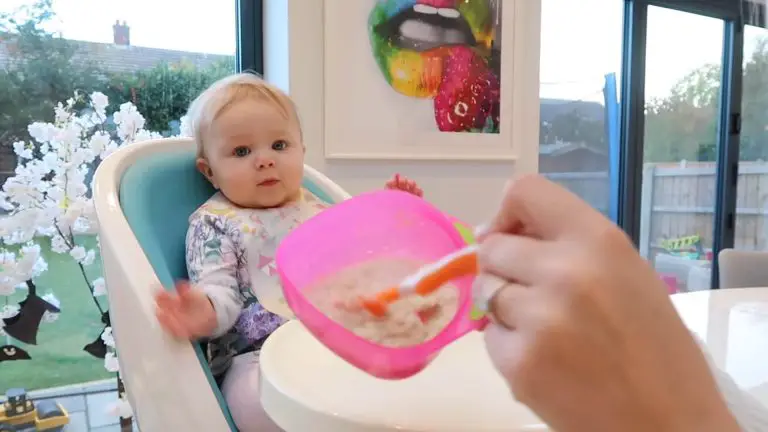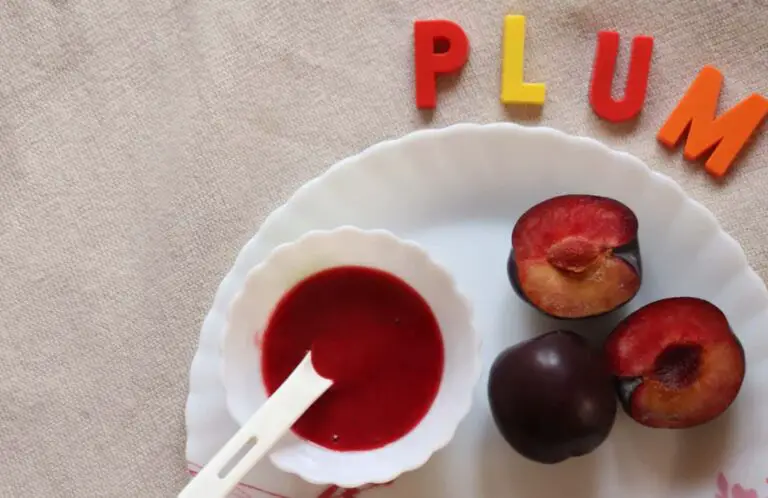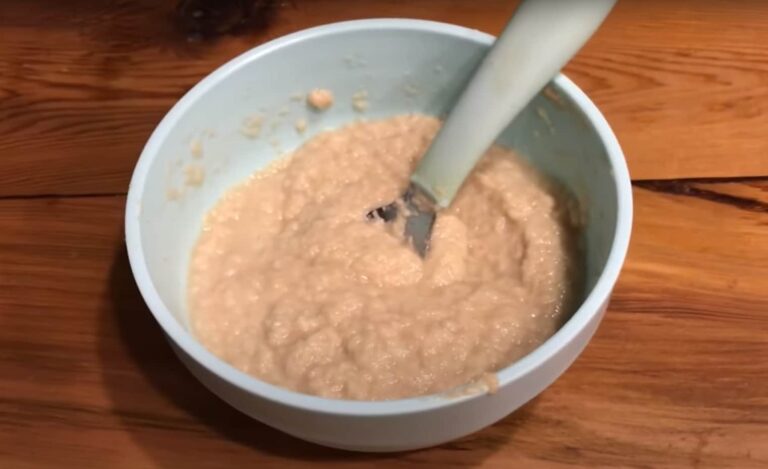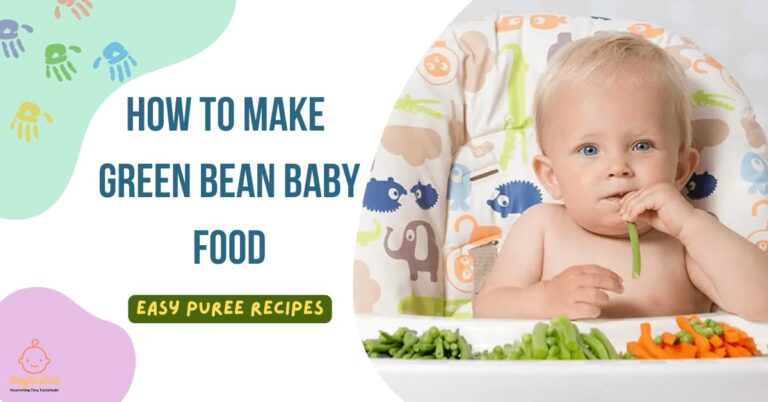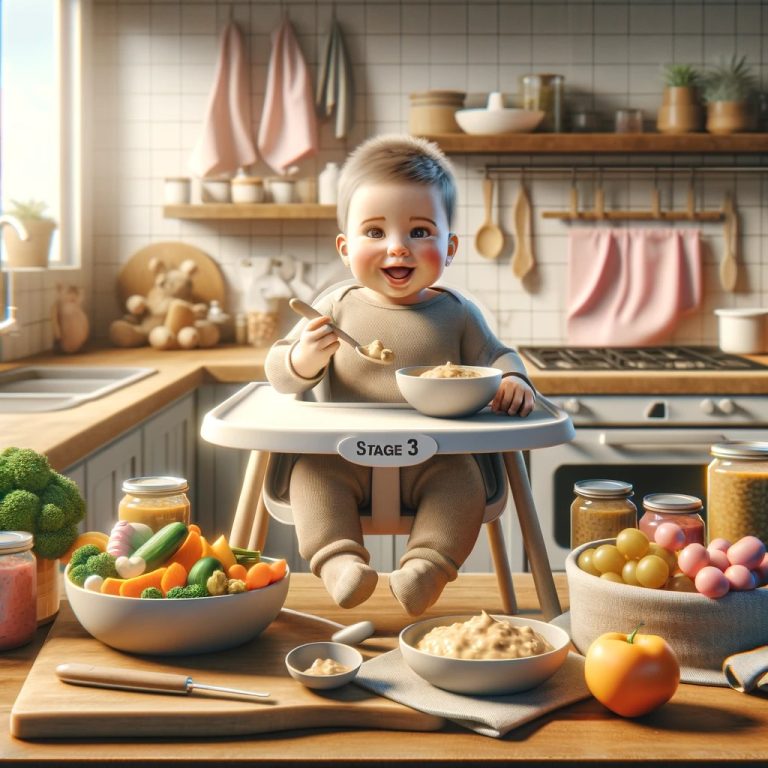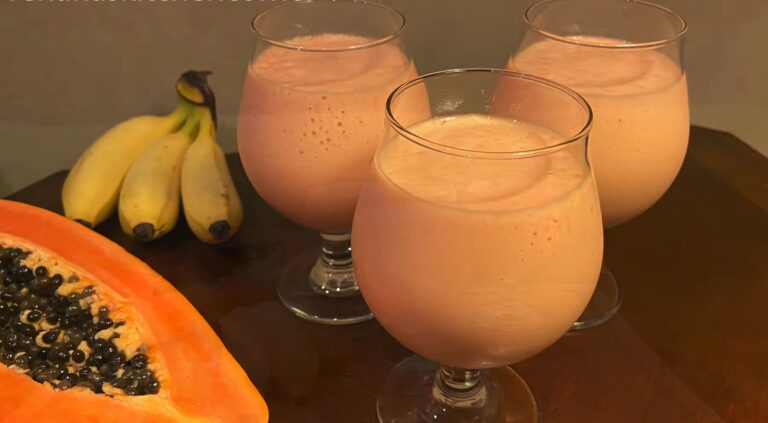when to start papaya puree for baby?
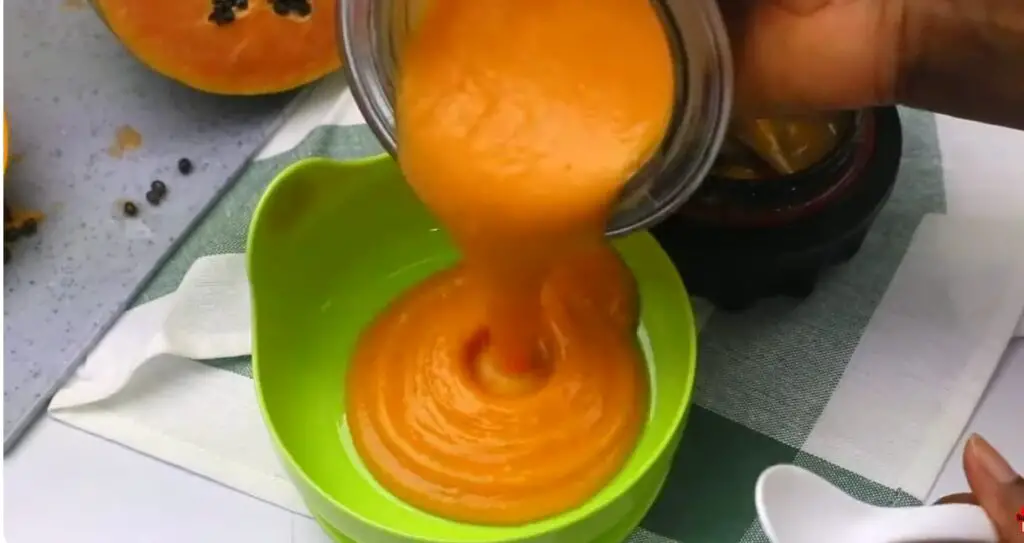
Start introducing papaya puree to your baby once they are around 6 to 8 months old. Papaya is a nutritious fruit that is easy to digest and can provide essential nutrients to support immunity.
Introducing solid foods to a baby is an exciting milestone for parents. As your baby grows, you may wonder when it’s the right time to introduce specific fruits like papaya. Papaya is a tropical fruit with numerous health benefits, including aiding digestion and providing essential vitamins and minerals.
However, it’s essential to introduce papaya puree at the right age to ensure your baby can handle it comfortably. We’ll discuss when to start papaya puree for your baby and how to prepare it. By following these guidelines, you can ensure that your little one receives the optimal nutrition from papaya while avoiding any potential digestive issues.
Introducing Papaya Puree To Your Baby’s Diet
Recommended Portion Sizes For Different Stages Of Baby’s Development

When introducing papaya puree to your baby’s diet, it’s important to consider their age and developmental stage. The recommended portion sizes may vary depending on these factors. Here are some general guidelines to help you:
- For babies between 6 to 8 months old, start with a small serving of papaya puree, around 1 to 2 tablespoons.
- As your baby grows and their appetite increases, you can gradually increase the portion size to 2 to 4 tablespoons.
- By 9 to 12 months old, your baby can have larger servings, typically around 4 to 6 tablespoons.
Mixing Papaya Puree With Other Fruits Or Vegetables
Introducing a variety of flavors to your baby’s diet is important for their taste development and nutritional intake. Mixing papaya puree with other fruits or vegetables can enhance the taste and create new flavor combinations. Here are some ideas:
- Papaya and Banana Mash: Mash together ripe papaya with a ripe banana for a creamy and sweet puree.
- Papaya and Avocado Blend: Blend ripe papaya with a ripe avocado for a smooth and nutrient-rich puree.
- Papaya, Mango, and Spinach Puree: Blend together equal parts of papaya, mango, and spinach for a vibrant and nutritious puree.
Monitoring For Any Allergic Reactions Or Digestive Issues
When introducing papaya puree to your baby, it’s important to keep an eye out for any allergic reactions or digestive issues. Some babies may have sensitivities or allergies to certain foods. Here are some signs to watch for:
- Rash or hives
- Swelling of the lips, tongue, or face
- Difficulty breathing
- Vomiting or diarrhea
If you notice any of these symptoms, stop feeding papaya puree to your baby immediately and consult with a healthcare professional. It’s always a good idea to introduce new foods slowly and one at a time, allowing a few days in between to observe for any reactions.
Signs Of Readiness For Introducing Papaya Puree
As a parent, you want to ensure that your baby is getting all the necessary nutrients for their growth and development. Introducing papaya puree into their diet can be a great way to add variety and provide them with essential vitamins and minerals. However, it is important to look out for certain signs of readiness before adding papaya puree to your baby’s diet.
Baby’s Age And Digestive System Development
One of the important factors to consider before introducing papaya puree to your baby is their age and digestive system development. It is recommended to wait until your baby is at least 6 months old before offering solid foods, including papaya puree. By this age, their digestive system is more mature and better equipped to handle new foods.
Ability To Sit Up With Support
Another sign of readiness is your baby’s ability to sit up with support. This is an important milestone as it indicates that their neck and core muscles are strong enough to support their body in an upright position. Sitting up with support is crucial for safe and successful feeding experiences, including trying new foods like papaya puree.
Loss Of Tongue-thrust Reflex
The loss of the tongue-thrust reflex is another sign that your baby may be ready for papaya puree. The tongue-thrust reflex is a natural reflex that helps protect babies from choking by automatically pushing out anything that is placed in their mouth. When this reflex begins to diminish, typically around 4-6 months of age, it indicates that your baby is ready to start exploring new textures and flavors, such as papaya puree.
By paying attention to these signs of readiness, you can introduce papaya puree to your baby at the right time, ensuring a smooth transition to solid foods and promoting their overall health and development.
Recommended Age Range For Starting Papaya Puree
When it comes to introducing solid foods to your baby, it’s important to follow their developmental cues and readiness signs. According to experts, the recommended age range for starting papaya puree is between 6-8 months. By this age, babies have typically developed the necessary skills to swallow pureed foods and their digestive system is ready to handle a variety of flavors and textures.
Transitioning From Breast Milk/formula To Solid Foods
Transitioning your baby from breast milk or formula to solid foods is an exciting milestone. It’s recommended to start introducing solid foods around the age of 6 months, as this is when most babies begin showing signs of readiness. These signs include the ability to sit up with minimal support, showing interest in food, and being able to hold their head steady. It’s important to note that breast milk or formula should still be the main source of nutrition for babies until at least 12 months of age.
Gradually Introducing Papaya Puree Alongside Other Purees
When introducing papaya puree to your baby, it’s best to start with a small amount and gradually increase the quantity as they become more accustomed to the taste and texture. It’s also a good idea to introduce papaya puree alongside other purees to provide a variety of flavors and nutrients. This can be done by offering different purees on separate occasions, allowing your baby to explore and develop their taste preferences. As with any new food, it’s important to watch for any signs of allergies or digestive issues and consult with your pediatrician if you have any concerns. To prepare papaya puree for your baby, follow these steps:
- Wash and peel a ripe papaya.
- Remove the seeds with a spoon.
- Dice the papaya into small chunks.
- Blend the papaya using a handheld blender or food processor until smooth.
- Serve the papaya puree in a bowl and feed it to your baby with a spoon.
Papaya is an excellent choice for babies as it is easy to digest and provides essential nutrients to support their growth and development. It is rich in vitamin A, which is important for vision and immune function. Additionally, papaya contains natural enzymes that aid in digestion and can help relieve constipation. Remember to always use ripe papaya, as unripe or partially ripe papaya can be difficult for babies to digest. Gradually introducing papaya puree into your baby’s diet is a great way to introduce new flavors and provide them with a wide range of nutrients. Remember to consult with your pediatrician and follow your baby’s cues to determine the appropriate timing and quantity of introducing papaya puree. Enjoy this exciting journey of introducing new foods to your little one!
Store-bought Papaya Puree Options
Exploring Commercial Papaya Puree Brands
When it comes to introducing store-bought papaya puree to your baby, there are a variety of options available from different brands. Commercial papaya puree can be a convenient choice for busy parents or for those who don’t have access to fresh papaya. It is important, however, to choose a reputable brand that prioritizes quality and nutrition for your little one.
Reading Labels And Selecting Organic, All-natural Options
When selecting store-bought papaya puree for your baby, it is essential to read the labels carefully. Look for brands that offer organic and all-natural options, as these are free from harmful pesticides and additives. Organic papaya puree ensures that your baby is getting a wholesome and safe product. It’s also wise to check for any additional ingredients, such as added sugars or preservatives, which may not be suitable for your baby’s delicate tummy.
Cost And Convenience Considerations
When deciding on store-bought papaya puree, it’s important to consider both cost and convenience. While commercial options may save you time in preparing puree from scratch, they can sometimes be pricey. Look for deals or discounts at your local grocery store or consider buying in bulk to save money in the long run. Additionally, think about the convenience factor – do you prefer pouches or jars? Are there travel-friendly options available? Assessing these factors ensures that you have a cost-effective and hassle-free solution for introducing papaya puree to your baby.
Potential Risks And Precautions To Consider
Allergic Reactions And Sensitivities To Papaya
Papaya is generally considered safe for most babies to consume, but it’s important to be aware of potential allergic reactions and sensitivities. Allergies to papaya are rare, but if your baby has a known allergy to latex, there is a risk of cross-reactivity as papaya contains a protein similar to latex.
Ensuring Papaya Is Properly Ripened And Ripe Enough For Baby
When introducing papaya to your baby, it’s crucial to ensure that the fruit is properly ripened. Unripe or underripe papaya can be difficult for your baby to digest and may cause gastrointestinal discomfort. To determine if the papaya is ripe enough for your baby, check for a vibrant golden color and a slightly soft texture when gently pressed.
Consulting With A Pediatrician Before Introducing Papaya To Your Baby
Before introducing any new food to your baby’s diet, including papaya, it is always recommended to consult with a pediatrician. Your pediatrician knows your baby’s specific health needs and can provide guidance on when and how to introduce papaya. Additionally, they can help monitor for any potential allergic reactions or sensitivities. Some precautions to consider when introducing papaya include:
- Start with small amounts: Begin with small amounts of papaya puree to test your baby’s tolerance and observe for any adverse reactions.
- Watch for digestive issues: Monitor your baby for any signs of digestive discomfort, such as bloating, gas, or diarrhea. If any issues arise, discontinue papaya and consult your pediatrician.
- Avoid adding sweeteners: Papaya is naturally sweet and doesn’t require additional sweeteners. Avoid adding honey or other sweeteners before your baby turns one year old, as they can be harmful to infants.
- Go organic if possible: Opt for organic papaya to reduce the risk of exposure to pesticides and other chemicals.
Remember, every baby is different, and it’s essential to introduce new foods one at a time to observe any potential reactions. By following these precautions and consulting with your pediatrician, you can safely introduce papaya to your baby’s diet and enjoy its nutritional benefits.
Preparing Homemade Papaya Puree For Your Baby
Papaya puree is a great choice for your baby to start. Papaya is not only delicious but also packed with essential nutrients that can support your baby’s growth and development. Preparing homemade papaya puree is simple and allows you to have control over the quality and freshness of the ingredients. In this article, we will guide you through the process of selecting ripe and fresh papaya, as well as provide you with a step-by-step guide to peeling, deseeding, and cutting papaya. Finally, we will explore various cooking methods for making homemade papaya puree.
Frequently Asked Questions On When To Start Papaya Puree For Baby?
When Can I Give Papaya Puree To Baby?
You can start giving papaya puree to your baby when they are around 6-8 months old. It is a nutritious fruit that is easy to digest and provides essential nutrients for their immunity. Make sure to wash, peel, and dice the ripe papaya, then blend it until smooth.
Serve it in a bowl and feed it to your baby with a spoon.
How Do I Give My 6-Month-Old Papaya?
To give your 6-month-old papaya, wash and peel a ripe papaya, remove the seeds, and dice it. Use a handheld blender or food processor to blend the papaya until smooth. Serve it in a bowl and feed it to your baby with a spoon.
Papaya is a nutritious fruit that is easy to digest and can provide essential nutrients for your baby’s immunity.
How To Prepare Papaya For Baby?
To prepare papaya for your baby, wash and peel a ripe papaya. Remove the seeds and dice the fruit. Blend the papaya until smooth using a handheld blender or food processor. Serve the puree in a bowl and feed it to your baby with a spoon.
Is Papaya Easy To Digest For Babies?
Yes, papaya is easy to digest for babies and provides essential nutrients for their immunity. Start by washing and peeling the ripe papaya, removing the seeds, and blending it until smooth. Serve in a bowl and feed your baby with a spoon.
Conclusion
Introducing papaya puree to your baby is a nutritious and tasty option. Its easy-to-digest nature and essential nutrients make it a great choice for supporting your baby’s immunity. When preparing papaya puree, remember to use ripe papayas and ensure a smooth consistency to avoid any choking hazards.
So go ahead and introduce your little one to the goodness of papaya!


